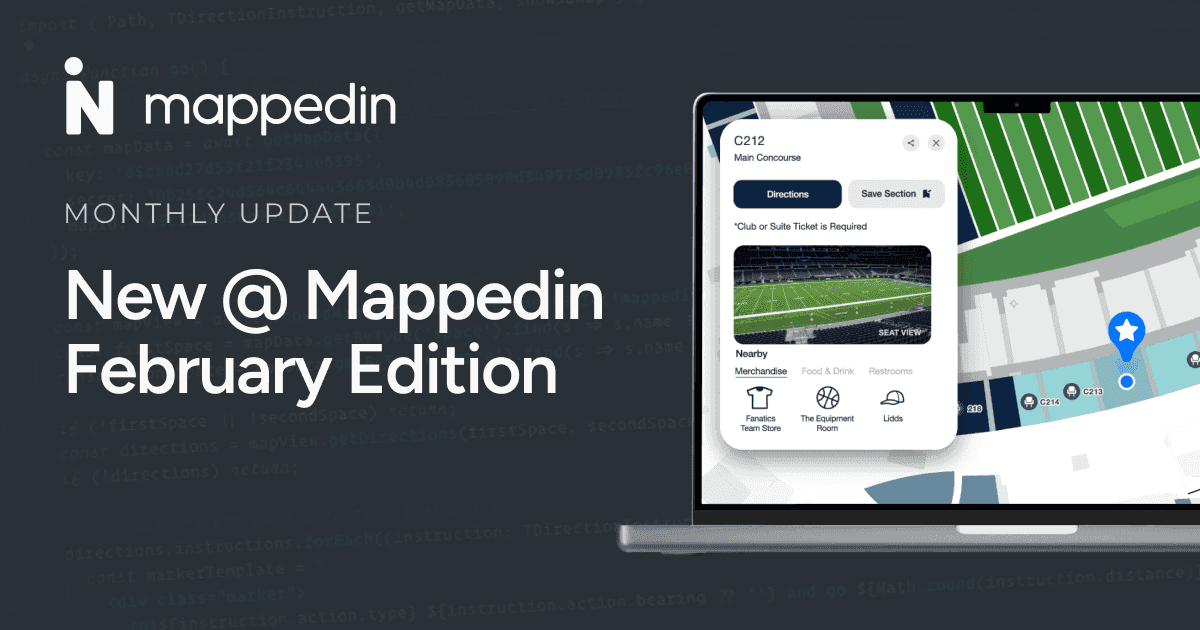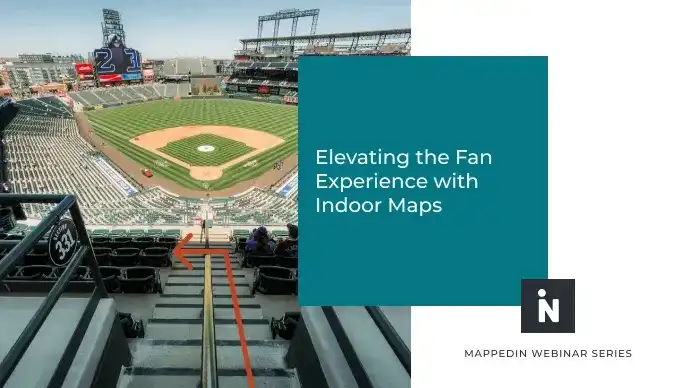Stadium venues host performers, sports teams, and thousands of people on a regular basis. There is a wealth of data related to stadium equipment, machinery, IT hardware, documentation, and other assets. Asset tracking solutions paired with a digital stadium map provide a powerful and real-time visualization of this data. Here’s how.
Why use asset management system for stadiums?
Asset tracking software is a digital, centralized system that enables stadium and sports facility managers to track physical assets across their venue. It is extremely valuable to have a detailed asset management system in order to determine what assets you own, where they are located, how much they cost, and whether they need to be replaced, updated, or maintained. With a software solution in place, asset portfolio management becomes simple and effective.

Benefits of stadium asset management solutions
Asset management solutions have many benefits for stadiums, including:
- Improving inventory management and accuracy
- Lowering the carrying costs of inventory
- Reducing or altogether eliminating errors
- Quickly locating stadium equipment, machinery, personnel, and other assets
- Monitoring equipment usage and its condition
- Increasing security and preventing asset theft and loss
- Identifying areas to streamline processes and operations
- Generating real-time reports on asset location and usage
Advantages of stadium asset management solutions
Stadium asset tracking systems have become fundamental in reducing costs and improving fan experiences. Advantages of this technology range from real-time location tracking, asset lifecycle management, strategic inventory planning, notifications and alerts, and more.
Asset lifecycle management
Stadium asset management systems also enable full transparency of asset life cycles, including their performance, usage, and condition. Lifecycle details help determine whether an asset is unsafe to use, needs repair, or will last for years to come. This information can be used to schedule maintenance activities more efficiently, replace stock, and dispose of faulty equipment promptly.

Increased accountability
By regularly tracking assets through a digital asset management platform, stadium facility managers can stay on top of asset information and improve security measures. Knowing where items are at all times ensures maximum accountability and accuracy of asset location, loss, and management. By integrating a digital indoor map with asset tracking software, employees can view a clear visualization of where assets are located around the facility and go a level deeper to understand who they were last used by.
Time & attendance tracking
Stadium and arenas can further integrate with asset tracking platforms in order to compare equipment usage to attendance at stadium events. This can enable a deeper understanding of asset lifecycles and more accurate forecasting.
Controlled inventory
Asset management solutions allow stadium operations teams to monitor inventory levels, costs, damages, performance, and administration control. This ensures complete visibility and accountability of assets from their initial purchase, to how they are used, and up to their disposal.

Strategic inventory planning
By tracking stadium assets, employees can accurately forecast inventory demand and determine how much inventory to restock and when. This ensures no additional costs of holding unused inventory and provides detailed historical data on asset costs, budget plans, and more.
Automated asset discovery
Manual entry of asset information using paper spreadsheets is prone to inaccuracies and inconsistencies, which means the consistency of logging the status of stadium equipment can easily slip through the cracks. Automated, digital asset management tools store all of the asset history in one accessible system. With automated updates, arena staff can maintain accurate asset tracking experiences and quickly locate an asset by viewing its real-time location on the map.
Real-time information
Accuracy is one of the most important elements to an effective asset management solution. Basing decisions on outdated information can be a waste of time and have severe cost implications. Understanding asset quantity, cost, current location, action histories, where the item is regularly stored, and any required permissions, are just some examples of the real-time tracking information accessible through an inventory management system.
Alerts and notifications
Stadium operations staff can set up alerts and push notifications to keep employees up-to-date on asset locations, upcoming maintenance on machinery or other equipment, assets that are out of order, and more. This transparency across the organization can vastly improve processes for stadiums and arenas.

Depreciation management
Employees can track equipment to gauge the required maintenance of each item, the rate of depreciation, and the value as it declines. Most assets depreciate over time and need to be replaced or serviced. Managing this information closely with a software system can help stadiums make informed financial decisions on investment activity.
Mobile-friendly interface
A huge benefit of stadium asset tracking software is the ability to access information from a desktop or mobile device. As employees navigate large stadiums, they can view the digital stadium map or asset tracking platform from their mobile phone and access the data they need in real-time. This can help them quickly locate a piece of equipment or view other important information.
Cloud-Bbased asset tracking technology
With cloud-based technology, asset data is stored, updated, and accessed through one convenient location: the cloud. While using the same asset tracking system, access control can be assigned to employees so that they can login to a webpage to see their own data sets. Cloud-based technology also has lower administrative costs compared to manually tracking assets.
Why use Mappedin?
In order to have a successful asset tracking solution, businesses must understand where inventory, equipment, machinery, and so on are located within the context of the building. Indoor mapping works hand-in-hand with asset tracking as a way to visualize these various data points. To ensure the most accurate data is collected and displayed, digital stadium maps should be kept up-to-date as floor plans, layouts, and building structures change over time.

Mappedin is the leading provider of indoor maps and map management tools. Our powerful map editor is used by businesses spanning across a number of unique industries in order to create, edit, and maintain indoor floor plans over time. Mappedin Venue Format (MVF) is a GeoJSON based format that provides customers with geometry and location data associated with their venue and is directly connected to the Mappedin CMS. MVF can be used to build 2D mapping experiences or be converted with Mappedin’s 3D renderer or a variety of other 3D renderers available on the market.
Asset tracking for stadiums FAQs
What software should I use for equipment/asset tracking?
In order to have the most effective asset tracking solution, you should consider working with a provider that utilizes indoor positioning, as well as an indoor mapping software. These three systems work together to provide the most accurate and easy-to-use experience and the digital floor plan helps visualize the movement and current location of assets within the building.
How does stadium asset tracking Work?
A stadium asset tracking system provides arena employees and administrators with valuable information to streamline operations and increase efficiencies. Paired with a digital indoor map, asset tracking and management is taken to the next level by creating new efficiencies and experiences.
How do companies track their equipment?
Airports, hospitals, office buildings, and other industries use asset management software to efficiently keep track of equipment and items. Construction, healthcare, education, first responders, and other types of real-time asset tracking are all extremely valuable. Information is readily accessible from asset tracking devices such as mobile phones, easy to keep updated and accurate, and can create new efficiencies. Contact us to learn more.
Tagged In
Share


